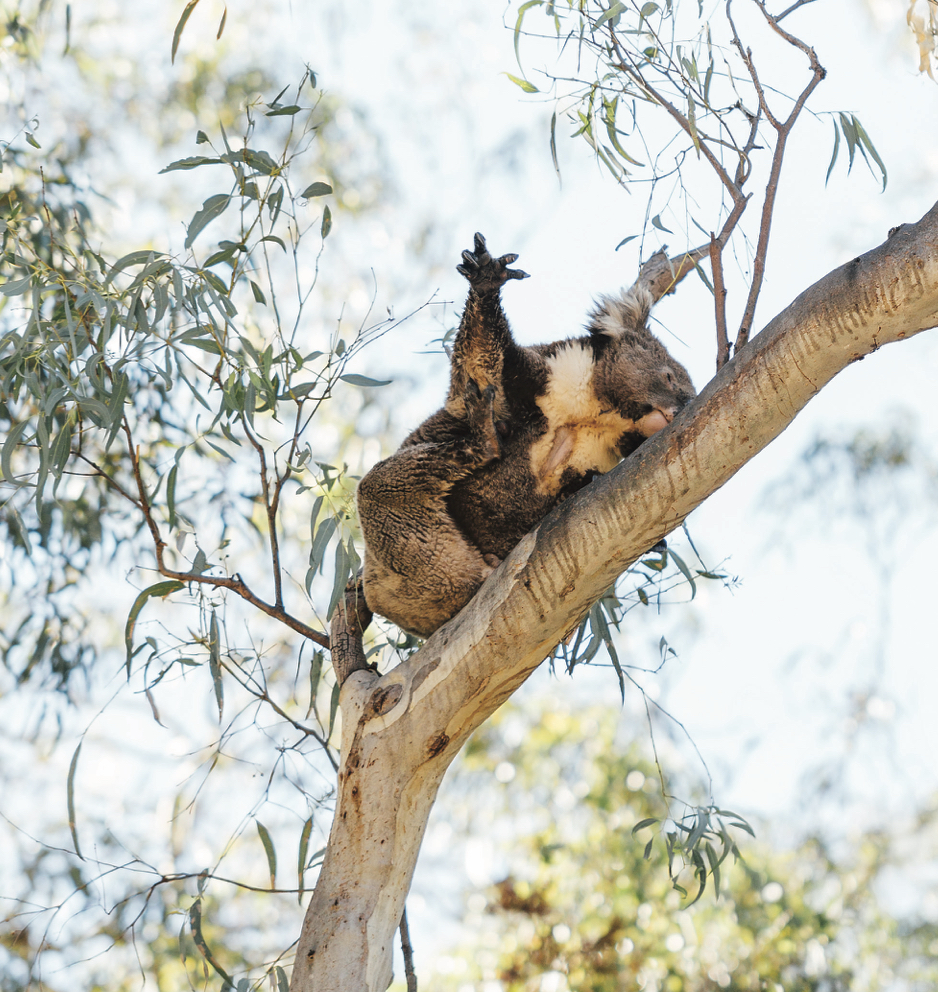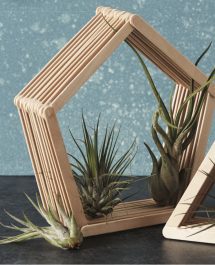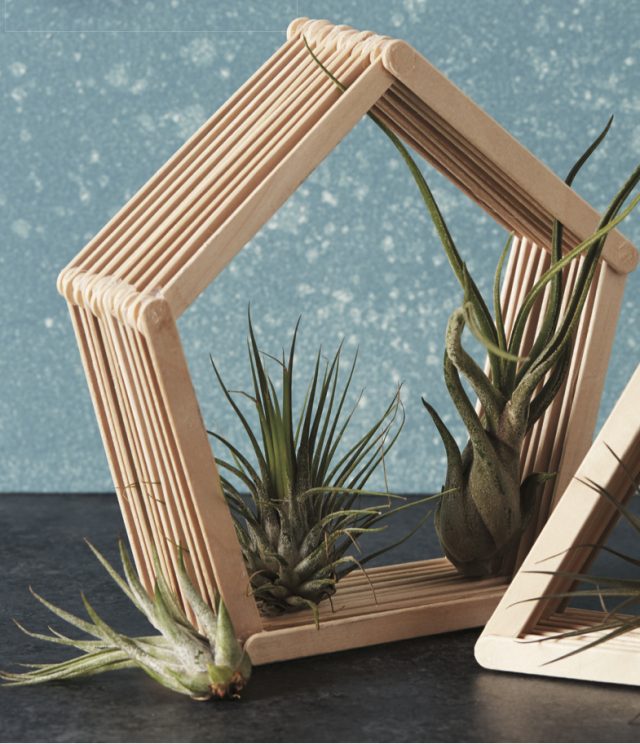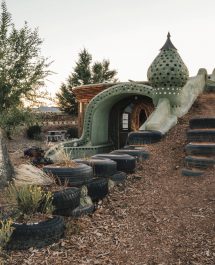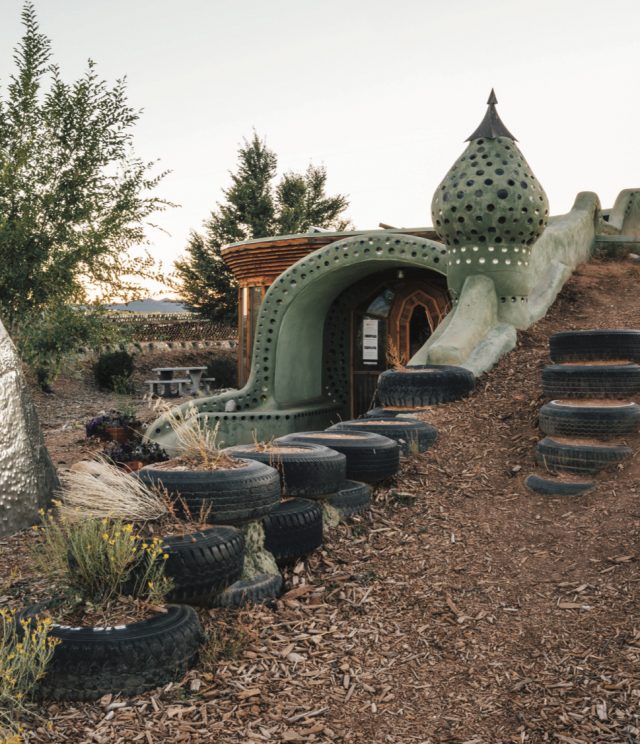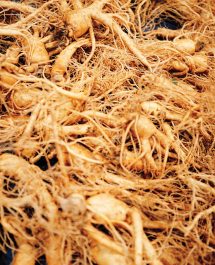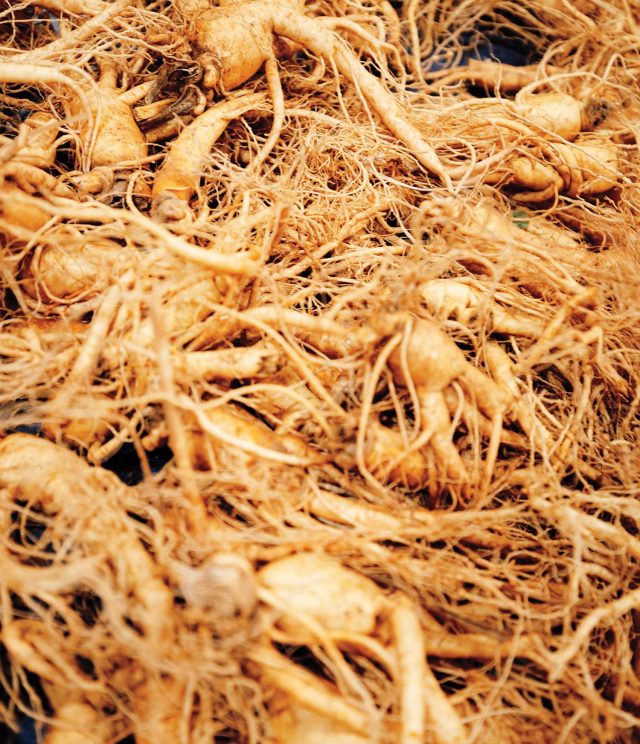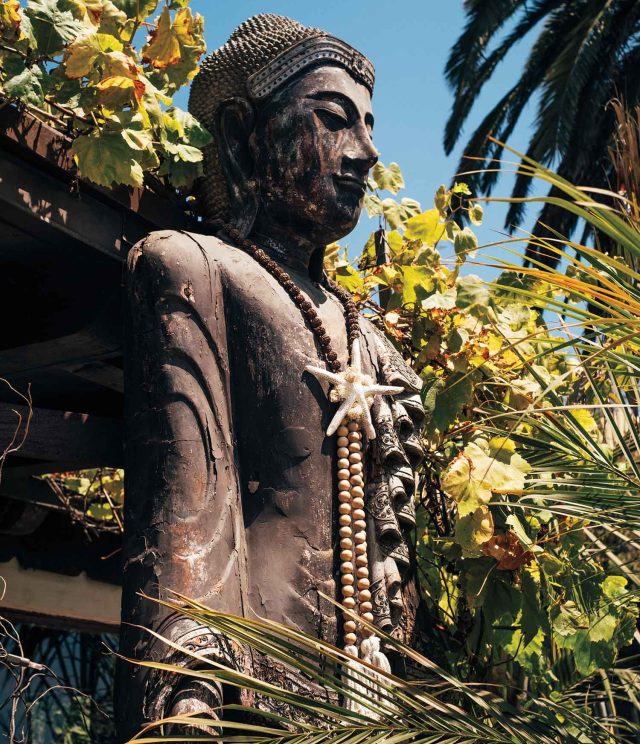
Story by STACIE STUKIN
Photographs by JONAS JUNGBLUT
DAY 1
FROM LOS ANGELES, it takes over 20 hours and two planes to get to Adelaide in South Australia. You lose a day in the process, which means crushing jet lag. But it’s worth the trek because once you touch down in the Land of Oz, it’s nothing but extraordinary wining and dining.
If you do just one thing, book culinary guide Mary Anne Kennedy. She’s an insider who knows all the unusual history and glory of South Australian food culture—the smelly cheeses, the mushroom growers, kangaroo meat, South Australian grown ancient grains like freekah and millet, DIY kombucha kits, local Murray River salt coveted by chefs all over the world—you name it, she can help you taste it.
During my first dinner in Adelaide at Bistro Blackwood, ordering a Davidson Plum Sloe Gin Sour opens up a whole new world of indigenous Australian ingredients. The dark purple Davidson plum—which I later learn isn’t a plum but a rainforest fruit—has a tangy acidic flavor that’s lutein-rich (good for the eyes), and also contains magnesium, zinc, calcium potassium, and 100 times the vitamin C of an orange. I like this combo: cocktail as wellness formula.
Chef Jock Zonfrillo—one of Australia’s most celebrated chefs—isn’t going for a healthy menu. But his culinary philosophy honors native ingredients, many of which have been dietary staples for Australia’s Aboriginal people for centuries. He incorporates bold, citrusy lemon myrtle into a refreshing granita, samphire, a native sea succulent, graces a kingfish crudo dish, and he drizzles eucalyptus oil atop a buttery potato puree. Zonfrillo is so passionate about preserving the cultural heritage of these indigenous ingredients that he established a research institute called The Orana Foundation. This adds dining value since, if you ask, the staff is happy to educate you about Australian ingredients.
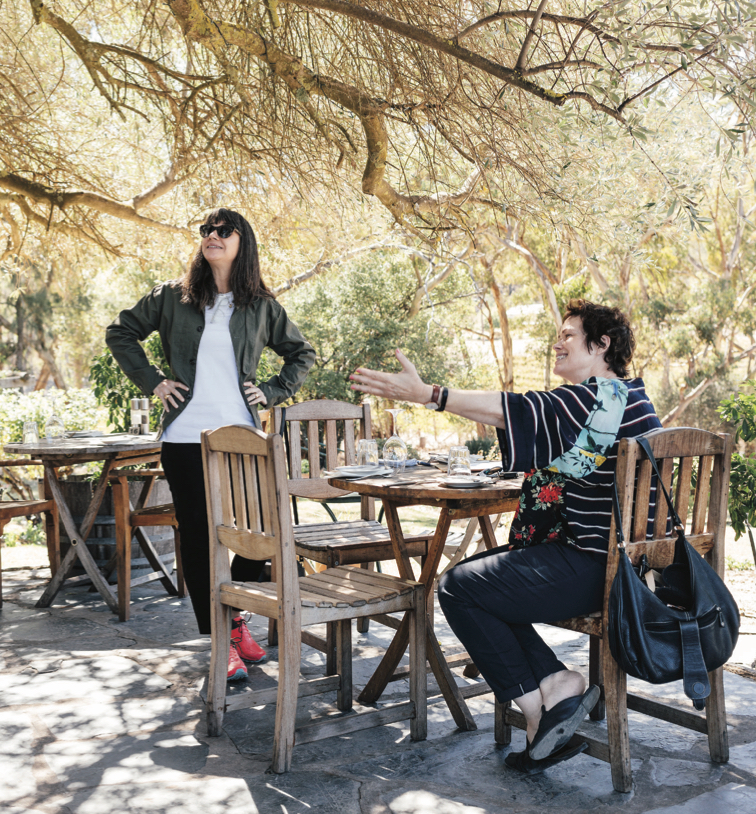
DAY 2
I WAKE UP AT 4:30 A.M. in need of caffeine. Fortunately, Australia has
a strong coffee culture with its own vocabulary, one that Mary Anne rattles off as I frantically scribble down the varieties into my notebook: Short Black (espresso), a Flat White (a shot of espresso with slightly frothed milk), Latte (like a at white with more milk), Cappuccino (small amount of foamed milk sprinkled with cocoa), Long Black (a double shot of espresso with hot water) and finally, a Macchiato (a shot of espresso with a little frothed milk). Try them all.
Today Mary Anne and I head just a short drive outside Adelaide to McLaren Vale, the origin of South Australia’s sustainable wine industry. Here, the latest “if you build it, they will come” attraction is d’Arenberg winery’s Cube. Yes, it looks like a giant Rubik’s cube (though in black and shimmer), and it’s a sensory overload experience that the Australian press describes as “Willy Wonka’s Wine Factory.”
Fortunately, as I get ready for a wine-blending class, I take a seat in a quiet alcove high above the fray that’s surrounded by windows with epic views of acres of biodynamic vineyards. Under the tutelage of the super knowledgeable and entertaining Cellar Door hostess, Tanya Withers, I get an introduction to the art of winemaking and how the quintessential Australian grape, Shiraz, can have different characteristics based on ripeness, age, and growing region—some are acidic, others are fruity and tannic or woody. In the end, they’re combined in different percentages to create a perfectly balanced, delicious wine.
My first attempt at blending is undrinkable. I groan and spit it out. I refine further and after the third try, I create something that may be worthy of pairing with a frozen pizza while watching Bravo. But the exercise is valuable. I learn winemaking is not just about palate—it’s also about science, chemistry and, of course, creativity. As Tanya says with a laugh, “In the end, it’s all theater, isn’t it love?”
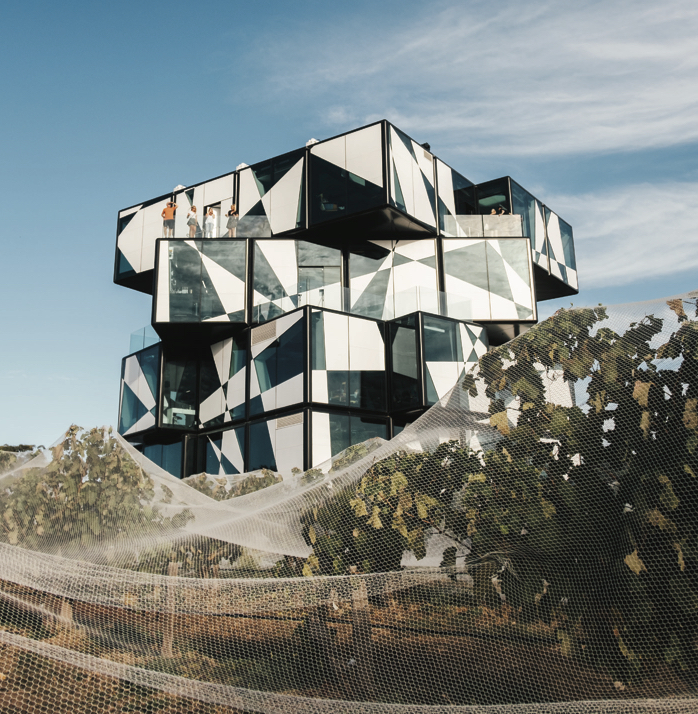
We arrive back in Adelaide just in time for dinner at Parwana Afghan Kitchen, which has become a tough reservation to secure. The restaurant, opened in 2009, is bright and inviting—the floors are covered in geometric tiles and you can feel it’s a family affair by the bustle and warmth. Opened by Zelmai and Farida Ayubi, who left war torn Afghanistan in 1987, the restaurant is run with the help of their children and grandchildren. The hero dishes: the Narenj Palaw Afghan Style rice topped with candied orange peel, slivered almonds and pistachios; and tender, fresh vegetarian Mantu dumplings, filled with carrot, onion and topped with yogurt.
DAY 3
TODAY WE LEAVE ADELAIDE for a few days and head to the Adelaide Hills. As we twist and turn through the windy roads shaded by canopies of old trees, the hilly, rustic landscape reveals apple orchards, small farms, stone fruit trees, chestnuts, and even guava grows abundantly.
Lulled by the drive, I think about the first night’s meal and the ants. Yes, I ate ants. Green ants. I dipped my finger into a pile of brightly colored insects (with larvae, too), and put them in my mouth. I tasted a surprisingly refreshing flavor—like lime and coriander with a hint of lemongrass. In Australia green ants are part of the whole indigenous food experience—favored by the Aborigines for their abundant Vitamin C and used medicinally to combat coughs and colds. Besides, micro livestock proponents tout that the future of a sustainable food system includes alternative protein in the form of bugs.
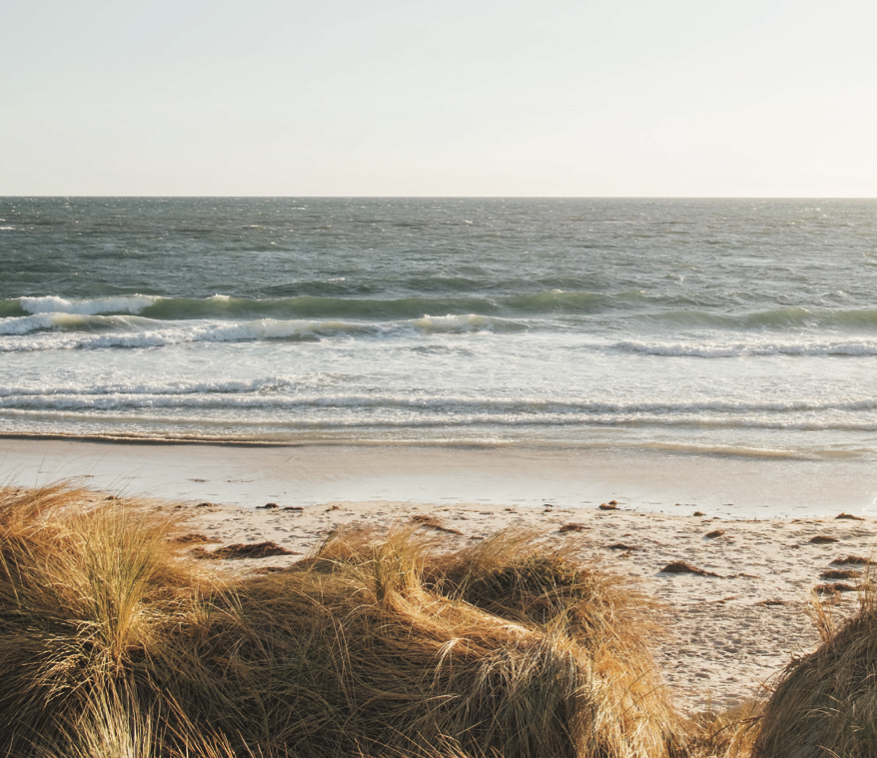
I find green ants infused in gin, whipped into ice cream and sorbet, and sprinkled atop cheese. I taste the latter, when we meet cheesemaker Kris Lloyd, whose company Woodside Cheese Wrights has been winning awards for her hand-crafted cheeses made from the milk of local herds she can visit. They are just as savory, rich, and surprising as they are pretty. “I’m Greek and I love to feed people,” Lloyd says, admitting she started making cheese because she couldn’t find local varieties she liked to serve.
I think about the First night’s meal and the ants. Yes, I ate ants. Green ants.
She lays out an opulent spread. We taste her freshest selections— a hard raw buffalo milk cheese covered in flowers like nasturtium, and saltbush, a native shrub that’s akin to a mild sage. The cheese is nutty and salty with a grassy, oral quality. A cheese she calls Edith is a nod to a traditional French goat cheese. It’s covered with a velvety bloom of mold and then rolled in ash, and has a pleasant sharp flavor. But the show stopper—and Lloyd’s most recent World Cheese Award winner—is her Anthill cheese, a simple block of creamy goat cheese covered in native green ants. It’s so good I waive a cracker and eat it straight off of a knife.
DAY 4
I WAKE UP IN the Clare Valley, where some of the state’s oldest vineyards were planted by German and Austrian settlers in the 1850s. I take a scenic bike ride through this region known for its Riesling wines and I see Australian magpies—their black and white tuxedo plumage utters as they carol their distinctive, loud songs—and a suspicious, muscular kangaroo gives me side eye.
But today is all about natural wine because, I think, some of the most exciting, innovative wines coming out of South Australia are made by young winemakers who subscribe to the natural wine philosophy—a harkening back to natural fermentation processes with minimal intervention. The wines are unfiltered, free of added yeasts, dyes, sulfur, acids or clarifying fining agents like egg whites or sturgeon guts. You could say they’re beyond organic (and vegan, too).
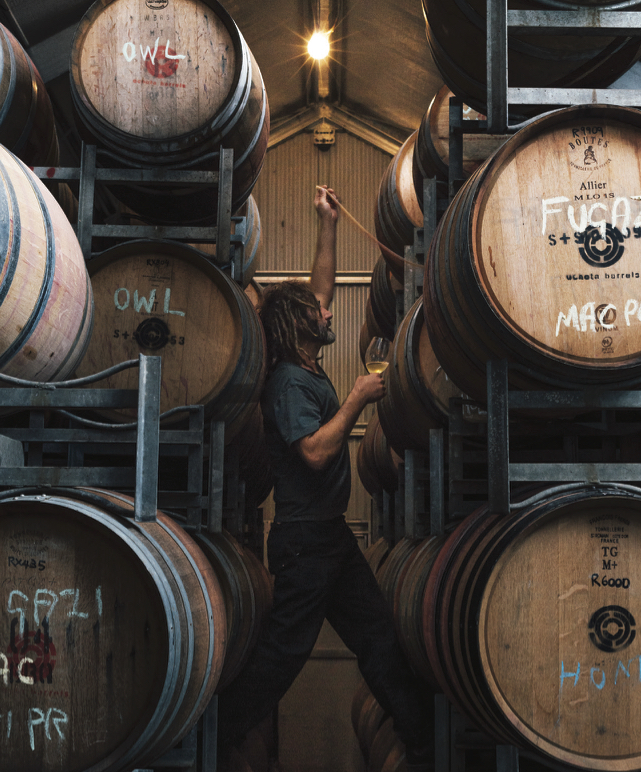
Kerri Thompson, of Wines by KT, is one of the pioneers. And while many traditional winemakers are skeptical of the natural movement, as Kerri starts to talk about sourcing her fruit, it’s clear she’s just as passionate about farming as she is about winemaking. She prefers no irrigation, dry-grown biodynamic grapes, and explains natural wines are a logical extension of the slow food movement. “It’s driven by sustainability concerns,” she explains. “Most people want to know where their food comes from and what’s in it. It’s the same for wine. The driver behind this is the ongoing health of the vines, the land, and the people.”
As we taste her Riesling called Pazza by KT, she explains pazza in Italian means crazy, a nod to her idealistic, risk taking in an industry that tends to value high yields and consistency. Making wines naturally can be unpredictable and requires flexibility and spontaneity—a challenge Kerri embraces. After she pours the wine, we hold it up to the light and admire its buttery color; because it’s unfiltered it’s slightly cloudy. It smells like citrus and a bit green, like spring. After a taste, which leads to a glass or two, Thompson’s vibrant, zesty wine becomes a fast favorite.
DAY 5
WE’RE NOW IN the Barossa Valley, renowned as a food and wine destination, and today the Louise Hotel has arranged a different kind of breakfast, with kangaroos. A guide picks me up and drives to a nearby conservation park. I’m equipped with a backpack full of treats—scones, cream, preserves, hot coffee—and I’m met at the trailhead by a group of kangaroos, which I learn is called a “mob.” I see so many mobs eating and hopping, including a mother carrying a baby in her pouch, that I give up taking photographs just to sit quietly and relish this once-in-a-lifetime moment.
I’ve also come to Barossa to learn how to make gin from Brett Durand, who is one of the artisanal distillers driving South Australia’s gin renaissance. Durand’s signature gin, one he calls The Matriarch, has a green olive, rosemary infusion that he says makes it a close cousin to a dirty martini. At his Barossa Gin School, surrounded by miniature copper stills and jars of herbs, dried fruits, and spices, Durand starts the class by explaining the base of every gin is juniper and coriander. From there, it’s maker’s choice. I decide to follow my nose and make a gin based on some of my favorite scents—grapefruit, cardamom, and lemon myrtle (organic and from the region), as well as an earthy Indonesian pepper called Cubeb. Brett approves my choices, puts it in the still, and tells me by the time I finish lunch, it’ll be ready to taste and bottle.

Brett is the son-in-law of Maggie Beers, who some people call “the Alice Waters of Australia.” Like Waters, in the late 1970s she embraced a local farm-to-table ethos and built a food empire that started with her critically acclaimed restaurant. Self-taught, she went on to write a popular food column and cookbooks, and to appear on TV. She’s a celebrity around here. Her farm shop is filled with shelves of her food products including quince paste and her famous Verjuice—an ancient condiment made from grapes that’s used to deglaze pans for sauces, or like vinegar when you need to ramp up flavor with a hit of acid. To bring some Barossa flavor home with me, I buy both.
What excites Maggie most about the region she helped put on the culinary map, are the young Barossans who left and have come back home to continue farming and making food and wine. “The land drew them back,” she observes, “and they’re uplifting the whole philosophy that using only the best, fresh ingredients and letting them shine, is the simplest way to succeed.”
DAY 6
ONE OF THOSE WHO has returned home to the Barossa Valley and continues to make a big culinary splash is Chef Lachlan Colwill. After an impressive career abroad, became chef at Hentley Farm in 2012, where he helped transform some old horse stables into a beautiful fine dining destination.
Colwill now lives on a farm he can see from the restaurant, and much
of what he serves is either foraged or grown nearby—ingredients like wild spinach, rosemary, yarrow, and passion fruit, along with livestock such as quail and sheep. “We let the farmers around us and what we find locally dictate the menu,” he says, noting he, too, is as much farmer as chef. As he takes us through a spectacularly flavored and stunning looking five course meal—including kangaroo steak (with apologies to the mob), oysters served with a dramatic dry-ice smoking effect, and a perfect passion fruit dessert placed in a delicate eggshell—the proof of his success is on the plate.
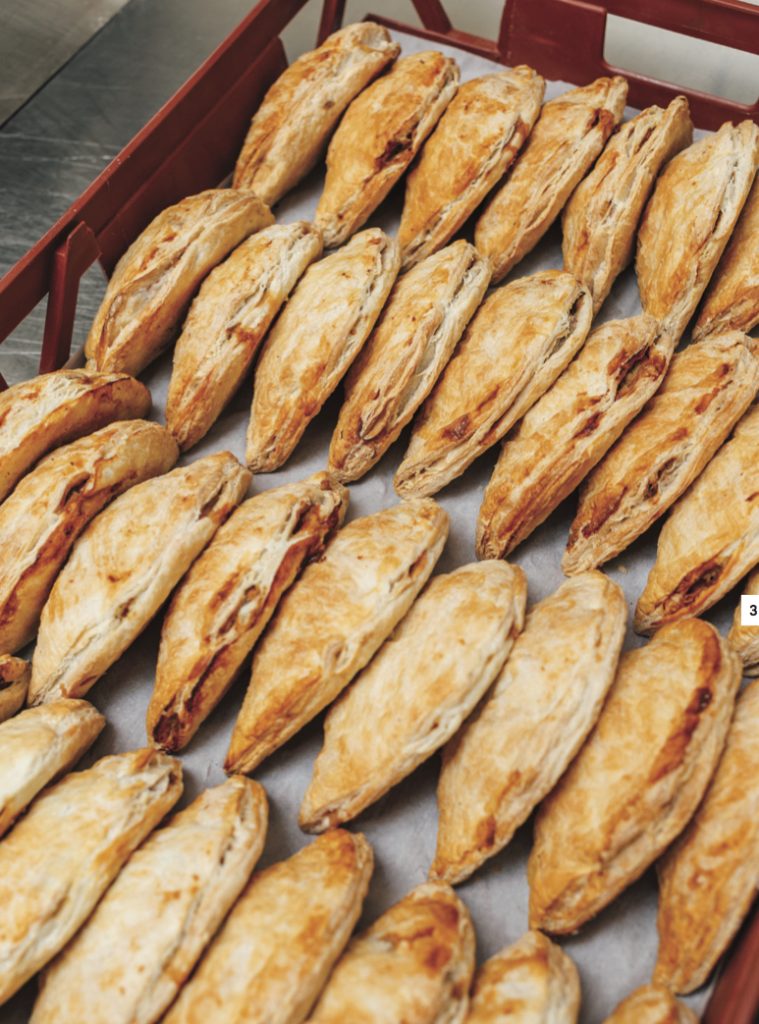
Originally settled by German-speaking immigrants, Barossa has family businesses that keep generations of culinary tradition alive. For example, the Apex Bakery has been selling breads and pastry in this region since 1929. Corey Fechner tells me about his family history. His grandfather started working at the bakery when he was 12, and they’re still using the same original Germanic, old-world recipes made from flours harvested in South Australia. They produce idiosyncratic goods like whole grain sourdough that uses a mother made eons ago from Shiraz grapes, and traditional white cake sheets covered with honeyed almonds, called Bee Stings. Fechner’s wood-burning oven is one of only two in the area still in operation and he has no plans to change a thing. “I still love the romance of this style of baking,” Fechner says. “We don’t think anything is broken, so why fix it?”
Such adherence to tradition is also on display at Graham Linke’s butcher shop, Linke’s Central Meat Store, where he learned to smoke German-style meats and sausages using a technique that involves eucalyptus sawdust that his family has used for 90 years. He sources his meat locally and much of what he produces ends up on charcuterie plates at tasting rooms in wineries all over the region.
DAY 7
I’M BACK IN ADELAIDE to indulge my inner plant nerd with chef Paul Baker as we tour the Adelaide Botanic Garden, where he forages ingredients daily to inspire his menu at the Botanic Gardens Restaurant. “Nothing is grown for the restaurant,” he says, admiring the pomegranates that are weighing down the branch of a tree. “We only use what we can find here in the garden.” We discuss how to bake with lemon myrtle. We use our hands to break open Australian finger limes, releasing shiny pearls of citrus that resemble delicate caviar. And we rub borage between our hands and marvel at the oyster and cucumber scent that Chef Baker uses as a botanical in his gin and tonic.
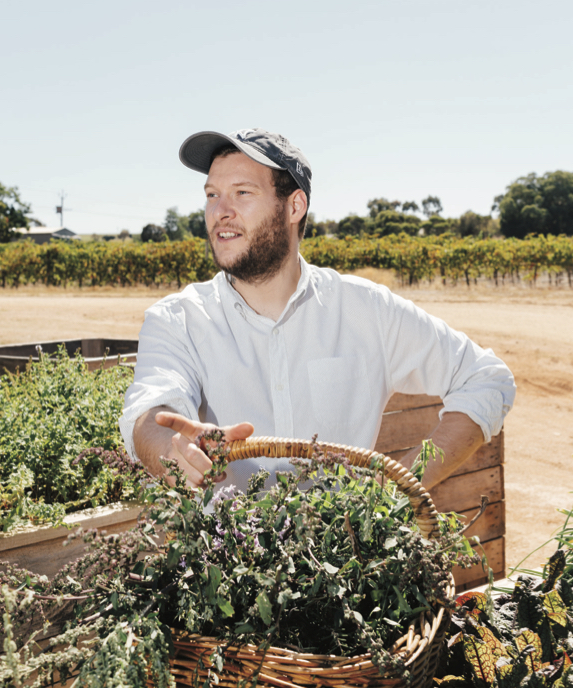
He and I could easily wander through the garden—originally built in 1857—all day, but lunch is served. Chef Baker starts us off with pork crackling topped with an Illwarra plum puree, riberry, and Tangia pea flowers, all native varietals that impart tart, rich flavors. Lunch ends seven courses later, including a divine Hay Valley lamb rump with creamy potatoes seasoned with local saltbush that pairs perfectly with yet another natural wine discovery, a 2017 Koerner Cannanau Grenache.
We use our hands to break open Australian finger limes, releasing shiny pearls of citrus that resemble delicate caviar.
This afternoon we take a final sweep through Adelaide and contemplate dinner. Mary Anne touts a classic Adelaide meal—fish and chips accompanied by a glass of Riesling—and suggests we pick it up from the Stunned Mullet where Dino and Amanda Papadopoulos serve up only the freshest daily catch. We head down to Henley Beach, walk in the super fine, white sand, and settle down on a rock jetty to eat big fat, juicy chips and fresh battered and flakey King George whiting fish. The seagulls swoop and swarm overhead because they want some food, too. But they’ll have to wait until after we savor our meal and the glorious sunset that exquisitely signals the end of my trip to South Australia.


